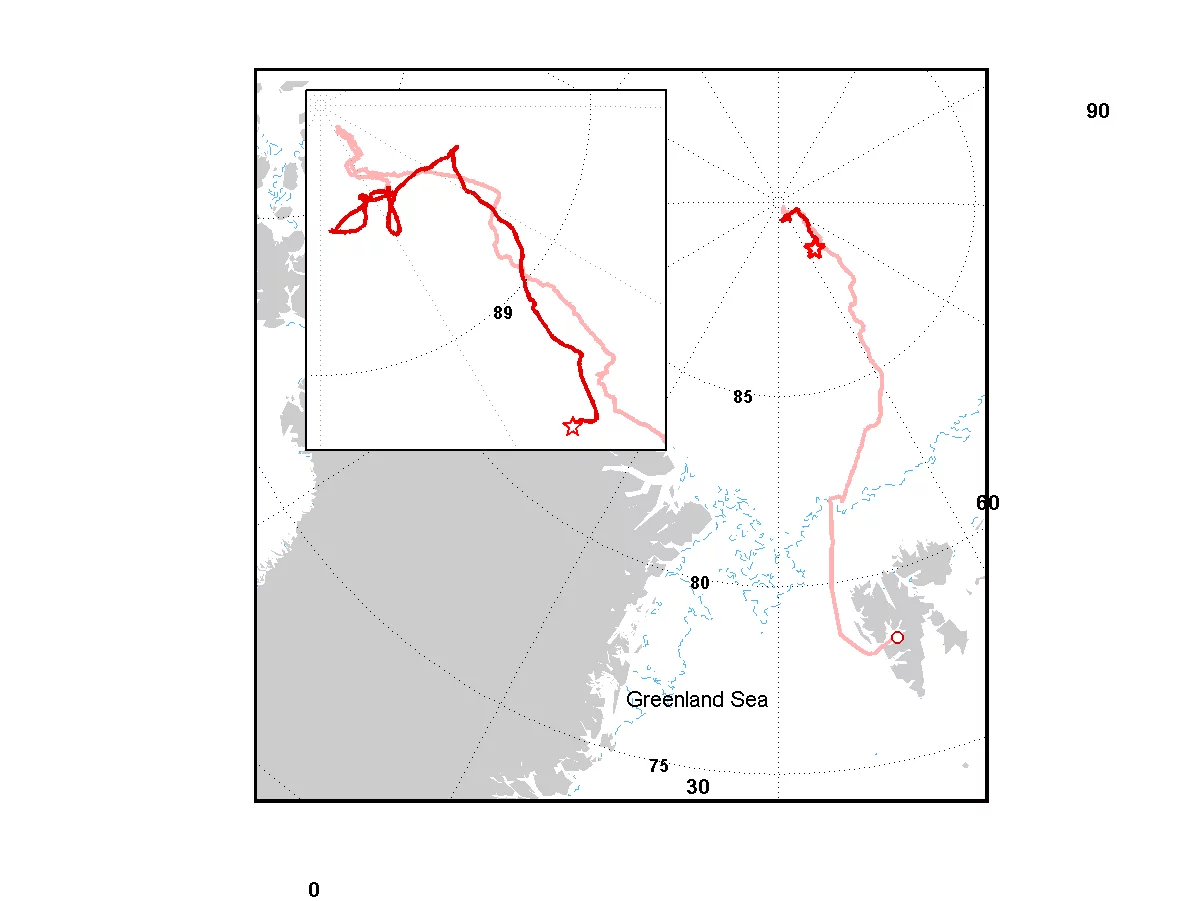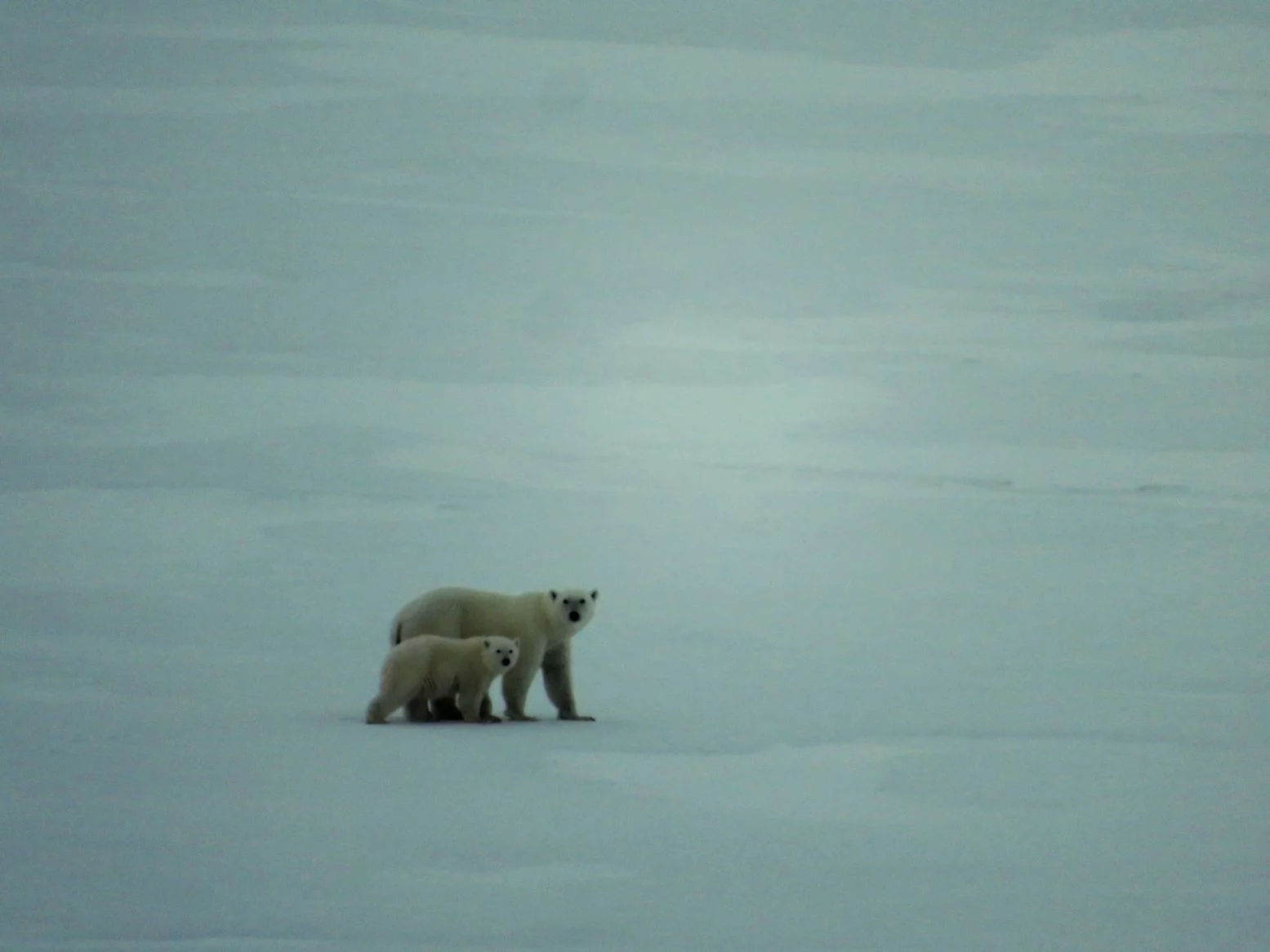Arctic Ocean Blog
17 September 2018
Beautiful and Forceful
by Julia Schmale
Current position: 87° 32′ N, 17° 42′ E
Current position: 87° 32′ N, 17° 42′ E
It’s the last week on the floe. We have drifted considerably south, about one degree. The sun is still 24 hours above the horizon, but we notice that the light becomes dimmer at night. There is a slight taste of winter already. Temperatures have dropped and are often well below -10°C. Snow falls more frequently and covers all under a white blanket.
When we arrived on 13 August, the melt ponds were turquoise and carried water. There were areas of blue ice, some patches of snow and the water seemed very dark. Now, we can distinguish only many variations of white, contrasts are generally low. Strong winds are more frequent as well, in the past week every third day brought a storm with winds around 15 meters per second. The wind chill produces already now extreme conditions for work outside. A standard recommendation at the morning briefing is now “It’s cold, dress warm.”
The cold is of course important to keep in mind, but the real danger out on the floe is the moving landscape. The wind displaces the floe and the “shorelines” of the leads around us change frequently. The snow makes it difficult to know whether there is thin new ice or the thick 3 year old floe near the open water. Now being secured with a harness and using a sonde to check the ground becomes necessary; especially when “harvesting” frost flowers.
With the freeze-up of the open water, the sea salt is pushed out of the ice through brine channels. At the surface the salty brine forms beautiful shapes, the frost flowers. There are whole landscapes of freshly frozen water with flowers around us. Several projects have been waiting especially for this moment. One group measures halogens in the water, ice and air. Frost flowers might be an important factor in the halogen cycle during the freeze-up season.
I accompany the group of Katarina Abrahamsson from the University of Gothenburg. On a Nansen-sledge we are pulled with an electrical snowmobile - that does not produce any air pollution – to the site. There, two people get into harnesses and lie down on their bellies on the ice to scrape off the flowers, while two more people secure them with a rope. At the same time, I am tasked to drill an ice core through the freshly frozen surface. It doesn’t take long to get through the 11 cm thick new ice, even when drilling manually. We store the flowers and ice cores in bags that we evacuate from air. After 90 minutes we are done and enjoy a hot chocolate before heading back to the ship.
It becomes foggy, so we need to hurry up. While fog is a limiting factor for work on the ice, it is what we are waiting for on the 4th deck, the “aerosol online group”. We’d like to study the activation of particles in fog. So I hurry up to the lab container to observe the fog formation. However, the fog is granted only a short time, then the wind picks up and develops into a storm in just a couple of hours. This is exiting as well. The size distribution of the particles changes completely, new features that we had not seen before develop. We were hoping to catch any changes in the aerosol that might be related to the freeze-up period and the coming of winter. We might be lucky.
It is really unpleasant outside now. While some of us enjoy the feeling of the comfy shelter inside the ship, others are a bit worried about their equipment outside. The storm three days ago ripped apart one of the tethered balloons and the other one ended up with a bunch of holes that, luckily, could be fixed. For the moment there is nothing to do but wait. The polar bear scouting party will have a look at six o’clock the next morning.
At half past six, Lasse and Krisse return from their round and have bad news. The equipment at the open lead has disappeared. Matt Salter and John Prytherch from the University of Stockholm had a floating bubble chamber and a mast at the shore. The bubble chamber was installed to measure fluxes of particles from the open water to the air, while the mast measured heat and particle fluxes over the open water and ice surfaces. Now there is no trace of them.
Directly after breakfast, the group goes to their site to investigate the situation closer. They can’t recognize the scenery. The storm changed “their” lead so much. They see, however, that another floe had been pressed into the shoreline and soon they find a couple of zarges boxes and parts of the mast sticking out from the pile of ice. They stand and listen, and – believe it or not – the dry air generator from the bubble chamber is still in action. All hopes of rescuing the material are however lost once the new ice ridge is inspected a bit more carefully. That’s a definite goodbye to the instruments. The data are saved, luckily.
There is no time for them to contemplate; the radio warns them of two polar bears approaching: a mother with her cub. Everybody who was on the ice makes it safely back onto the ship and we watch the bears through binoculars and cameras walking around. Like the first bear, they seem to be so much at home in this environment. We start thinking that it is a good time to head back to our home soon and to leave the floe to the bears and the high Arctic.
Indeed, it is time to pack up. One and half days with everybody helping are enough to bring all material back to the ship. On Friday, 14 September after 33 days, we leave at 9 pm sharp. We gather on the helideck to say goodbye. Ahead of us are four to five days in the ice and if conditions allow we have an intensive measurement period in the marginal ice zone again before definitely returning home.
back to all blog entries
back to all blog entries




